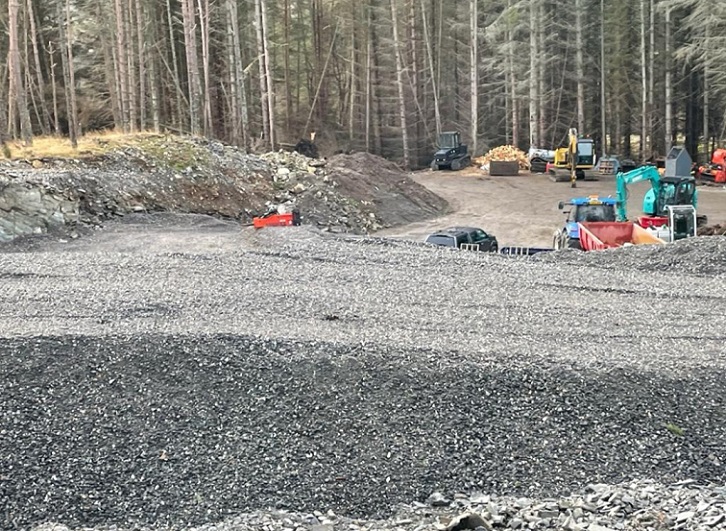
In January 2022, Highland Council granted prior approval to a new “forestry” road at Balavil for which there was no justification or need. At the same time I was made aware of large borrow pit which had not appeared on any of the plans and reported this to the Cairngorms National Park Authority (see here). This post takes a look at what has – or rather hasn’t – happened since within the context of how the Balavil Estate is now being managed.
The CNPA’s planning system – biased in favour of landowners
Borrow pits come under the Prior Notification system for forestry roads but where work starts before the Planning Authority has been notified they lose their special status (a presumption in favour of development) and require full planning permission.
The CNPA responded to my email of 13th February 2022 stating they would investigate. After waiting three months for a response, I followed this up with another email on 17th May. An apologetic response on 2nd June described the situation as “tricky” and asked to to hold back from saying more for the time being, a request which I respected. I heard nothing further before going away for the summer and then missed the retrospective application for planning permission (see here) which was submitted by the Balavil Estate to Highland Council on 12th September and called in by the CNPA on 20th September.
The CNPA did not alert me to the planning application, although I had informed them of the unlawful works. This might not have mattered because the documentation submitted by Balavil was poor and the CNPA rightly asked the agents acting on behalf of the estate to submit further information. It took them until 23rd February, six months later to do so. Alerted by a Parkswatch reader to the new documentation, I found the planning portal closed to comments from the public and so emailed the CNPA with my objections. I received what is a standard response:
“Unfortunately, this was received outwith the 28 days from when the CNPA ‘Called-In’ the application. Therefore, your comments cannot be considered or formally reported in the same way as those made within 28 days. However, if your representation raises material planning issues that have not been raised by other parties then they will be considered as part of the determination of the application.”
This is wrong and unfair. While landowners are given months to submit and revise their plans after a planning application has been lodged, the public are given just 28 days by the CNPA. While correspondence raising “material planning issues” will be considered after that date, such representations are not be published on the planning portal and are kept secret from other members of the public. While the public are prevented from commenting on documents that are submitted at a later date or changes in the plans, the CNPA’s own staff and other statutory agencies face no such restrictions and rightly so.
This bias against the public is not required by the regulations that govern planning nationally, as evidence by the Loch Lomond and Trossachs National Park Authority (LLTNPA) which has allowed representations to be submitted in response to the current Flamingo Land planning application a year after it was first submitted.
The CNPA did helpfully explain they were constrained by their Standing Orders, which were adopted in May 2014 (see here), and stated that the application would be shortly considered by the Planning Committee. When I asked to speak to the Planning Committee, I was refused under those same Standing Orders because I had failed to lodge an objection within the 28 day limit. The whole system, unlike that in the LLTNPA, appears designed to make public participation in the planning process as difficult and limited as possible. The consequence is that it is much easier for applications from landowners and developers to get through on the nod.
I expressed these concerns to the Head of Planning and I am pleased to say he has informed me he will be recommending changes to the CNPA’s Standing Orders later this year. It cannot come soon enough. There are a significant number of planning applications in the National Park – the recent application by Highlands and Islands Enterprise to move the snow factory at Cairn Gorm is one example – which are of public interest but don’t receive a single comment from the public. By the time people become aware of such applications, more often than not it is too late to comment.
After the lack of communication, I was pleased to be informed that the application would be considered by the April Planning Committee only then to be told it was being delayed further. This means it is now over 15 months since the CNPA was first alerted to this unlawful development and the public could have been given the opportunity to offer comments.
What’s wrong with the Balavil borrow pit?
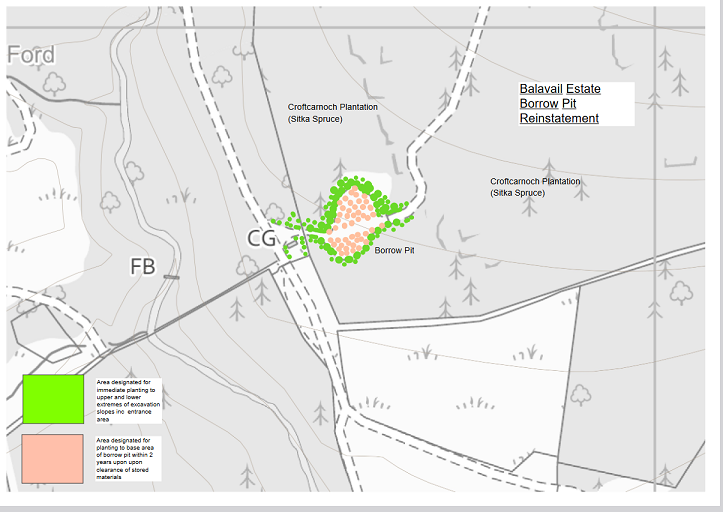
A plan showing the how the Balavil Estate intended to restore the borrow pit – actually a large quarry – was eventually uploaded to the CNPA planning portal on 5th March. How anyone can tell what the quarry will look like from those plans is unclear but as yet there is still no response from the CNPA’s landscape adviser on the planning portal.
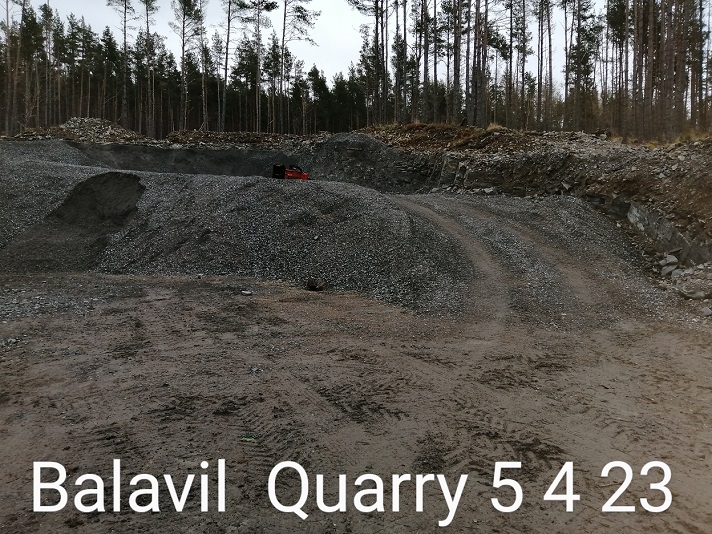
In the absence of any photos from the Balavil Estate, this is how the quarry looked a month later – a large hole in the ground. The response from the CNPA’s Ecology Adviser last September said it all:
“Ancient woodland
The borrow pit site and surrounding area is identified in the Ancient Woodland Inventory. It is not the age of the trees that are of greatest importance, it is the soil structure, function and species that ancient woodland supports, created over hundreds of years of that land use/tree cover. Once destroyed, ancient woodland cannot be recreated. That means that the ancient woodland resource that once was on the site has been destroyed.”
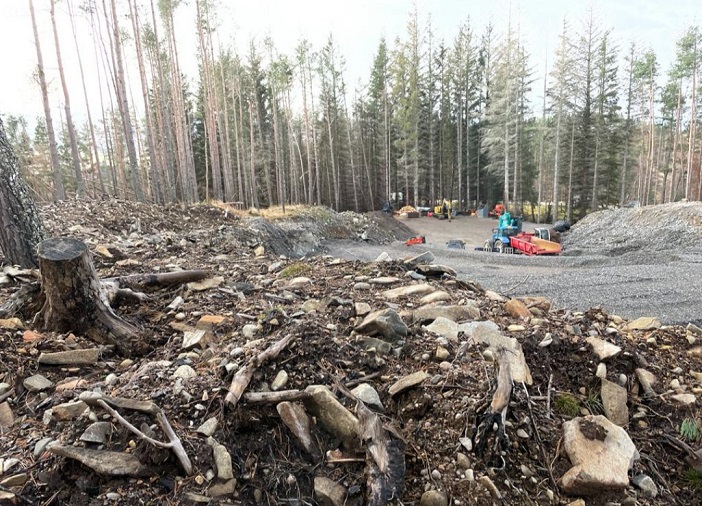
The Balavil Estate’s agents tried to justify this destruction as follows:
“In an effort to minimise the carbon footprint of the estate and strive to towards the carbon neutral
policies as set out by the Scottish Executive [sic], the decision to obtain the necessary resources for the upkeep and maintenance of the aforementioned access tracks etc from within the estate and not
import from 3rd party quarries is one which make sense. If 70,000 tonnes of material were to be imported from the local quarry this would have required 3500 haulage trips of 20 tonne vehicles each completing an 18-mile round trip to and from Alvie estate“.
This claim is the usual greenwash, failing to explain how much carbon was released by the tree felling and destruction of soils or consumed by the machinery used in the excavations. The more important point is the arrogance of the assumption that the estate had every right to excavate 70,000 tonnes of material to construct new roads in a National Park and without seeking planning permission
In the Prior Notification approved by Highland Council, supported by Trees for Life Woodland Services as “a low impact, sensitively sited track to Creag Bhuidhe woodland”, the estate claimed:
“For the most part of this track material will be obtained from ‘winning’ on site, from shallow borrow pits which run parallel to the upper most side of the track or from the material currently contained within the existing track corridor. This method efficiently removes the requirement for hauling large quantities of imported material long distances from the public roads into the site”.
The work on the Creag Bhuidhe “forestry” road was completed last summer and is very visible from Creag Bheag above Kingussie:
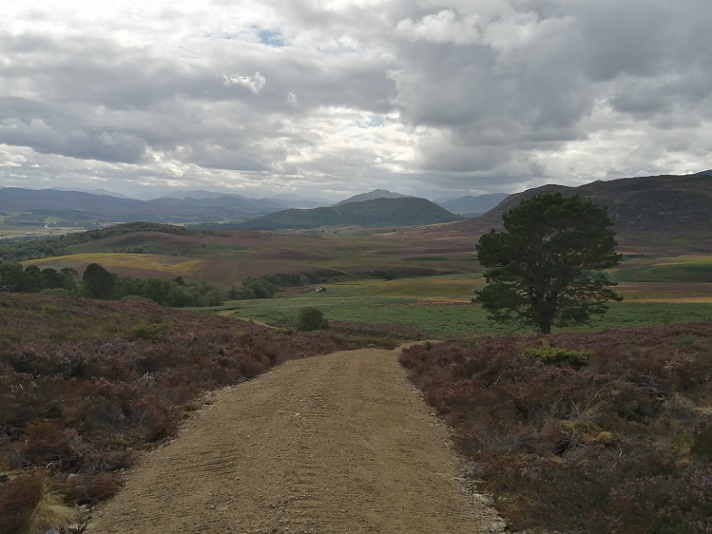
A question the CNPA needs to answer is how much, if any, material from the quarry was used to construct this new road and if not used in this road, what other road work has gone on on the estate? More specifically it would be in the public interest to know whether any of the material has been used in the planning application for 7.5km of new roads that Balavil submitted in 2019 but later withdrew?
The retrospective application for the quarry states that:
“The materials which are to be won from the proposed borrow pit are specifically allocated to all remaining existing track and road networks within the estates which are not [my emphasis] currently covered by the aforementioned recent planning consents.”
“To date approximately 70,000 tonnes of material has been won from the existing borrow pit, with
approximately 30,000 tonnes remaining stored within the borrow pit area for future use”.
40,000 tonnes of material from the quarry must have gone somewhere but that is not explained. Some appears to have been used on the road above the quarry but the implication of the Supporting Statement is the estate has been undertaking other work that should have required planning permission. What is the CNPA doing about that?
And what about the 30,000 tonnes of material still in the quarry and the estate’s statement that this is for future use? Were the CNPA to accept that it was legitimate for Balavil to hold large quantities of material for future use, this would not only delay restoration of the woodland indefinitely (the estate give no timescales for this), it would be giving the green light to further road development. That would likely undermine the CNPA’s policy presumption against new hill roads.
While the CNPA does not have a policy on borrow pits in its Local Development Plan, National Planning Framework 4 does and I have drawn the CNPA’s attention to this:
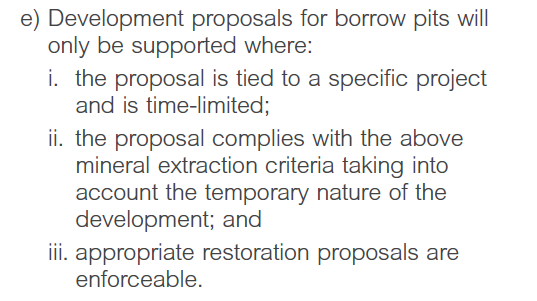
The 30,000 tonnes of material left in this quarry is not “tied to a specific project” or “time-limited”. There is every reason therefore for CNPA officers to recommend refusal of this retrospective planning action and initiate enforcement action against Balavil to restore the ground. The owners could easily afford to do this
The ownership and management of Balavil
Having been owned by Macphersons since 1790, the Balavil estate was bought by Eric and Hannah Heerema in 2015 (see here). Like his close neighbours Brewdog, Eric Heerema is involved in the drinks business, in his case through Nyetimber Wine (see here). This produces sparkling wines in the south of England but is registered as a company in Jersey, a tax haven. It may be, however, that his wealth comes from elsewhere as in the last accounts the company is shown as owing Mr Heerema £162,064,000:

When they bought the estate, the Heeremas claimed they had no specific plans but have in fact since then been managing it like a traditional sporting estate.
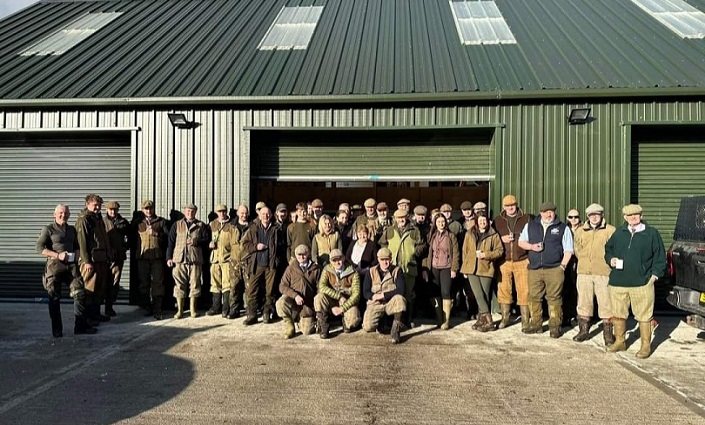
The new native woodland, developed with the support of Trees for Life Woodland Services, appears to be more about creating habitat for pheasant and partridges than benefitting the natural environment more generally. Relevant to the new quarry is that the construction of new tracks makes it far easier for shooters and gamekeepers to get around. Whether that is good for wildlife in the National Park is a moot question.
As an illustration of how such management appears incompatible with the aims of the Cairngorms National Park Guns on Pegs is currently advertising partridge shooting at Balavil:
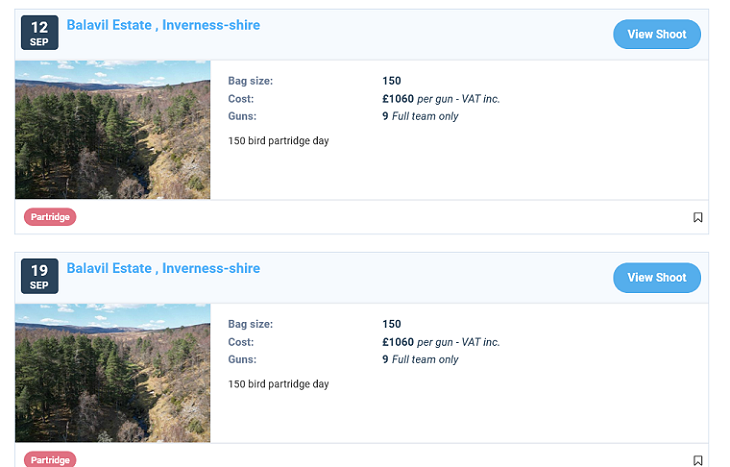
These are not our native grey partridge, whose numbers have been decimated by intensive agriculture, but the red legged partridge which are imported to Britain in large quantities each year.
The CNPA’s National Park Partnership Plan contains an aspiration – policy would be too strong a word – to end the release of non-native game birds in the National Park and the RSPB has called for the suspension of game bird releases due to concerns about avian flu (see here). Either the Heeremas are unaware of this or they have taken no notice.
Sadly, Scotland’s system of landownership is designed to allow very rich people like the Heeremas and their agents to do what they want with the land. Our two National Park Authorities have made almost no difference to that, despite the climate and nature emergencies,.
What needs to happen
It is time the CNPA Board got a grip and instructed its planning staff to respond far more firmly and quickly to unlawful developments such as those at Balavil and, if resources are part of the issue, to recruit more staff to do this. That would help restore some credibility to the National Park.
It’s time too that Scottish Ministers started to accept that the main problem with the planning system is NOT the time our Planning Authorities take to respond to planning applications but rather the way developers delay the process and how the system precludes public engagement, as demonstrated by this case. Ministers could do worse than instigate the long-promised but much delayed review of the Prior Notification system which plays into the hands of landowners like the Heeremas.

As usual, the patronising ‘carbon footprint’ phrase is used to excuse behaviour which is clearly commercially based: it’s a phrase so widely abused in virtually everything from local community matters to national and International policies which fundamentally are otherwise inexcusable or unjustifiable.
It’s another platitude which aims to make the speaker/writer for the organisation seem in touch with the sensitivity of the matter in hand but is ultimately flannel…So, moving forward, ‘ll leave off my rant here!
As a keen mountain biker I’ve past this borrow pit many times, what’s the difference on this one and the massive one glen feshie currently have on top of their hill, visually I would say that one impacts the environment more than the balivil one, what’s your thought’s nick?
Hi Tom, I did not know about the Feshie borrow pit – have you photos? Yesterday by coincidence I was shown photos a new road up the Allt Bhran connecting Glens Tromie and Feshie and suspect borrow pit is connected with that. I can find nothing on the planning portals of either Highland Council or CNPA about this work and am investigating further – in my view ALL road developments should be subject to proper public consultation and also to the Cairngorms National Park Authority’s policy presumption against new roads on open moorland. Proposals for such a road were floated a few years ago, I commented, expressed a number of concerns and understood plans were being revised but have seen nothing since. Wildland’s original proposals were to rationalise the road network on their land and remove a number of tracks, which they have been doing, which is a bit different to Balavil which has been extending their road network BUT the public need to know that where new roads may be justified, their landscape impact etc will be minimised.
The CNP could call for a judicial review or alternatively the local community could crowd fund a case for the CNP failing to democratically consider it’s duty of care to both the local community and visitors to the CNP.
There may well be protected wildlife habitat threatened or breached which would force the cessation of any works.
Really well written article. I admire your tenacity and attention to detail. Thanks